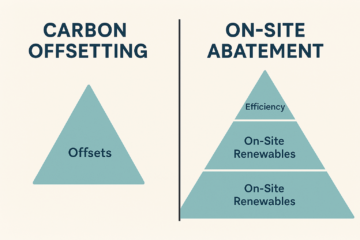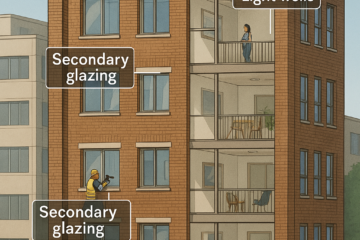Why Net Zero Matters in 2025
Buildings account for 18 % of Australia’s greenhouse‑gas emissions. With every state committed to a net‑zero economy by 2050—and many assets facing stranded‑value risk well before then—developers who move first will lock in higher valuations and cheaper finance.
The National Construction Code (NCC) is the main lever: its 2025 update tightens energy caps and embeds a trajectory toward zero‑carbon buildings.citeturn0search0turn0search2
NCC 2025: Key Changes Driving Net Zero
The draft NCC 2025 proposals introduce:
- Lower annual energy use limits for Class 3 & 5‑9 buildings
- Fuel‑neutral performance pathway encouraging all‑electric designs
- EV‑readiness provisions and allowances for on‑site renewables
Together, these measures align with the federal Trajectory for Low‑Energy Buildings.
Step 1 – Optimise Passive Design & Envelope Performance
Start with orientation, glazing ratios and high‑performance façades. A tighter thermal shell reduces HVAC loads by up to 40 %, making the later steps cheaper.
Step 2 – Electrify Everything
Gas‑free HVAC, induction cooking and heat‑pump hot‑water systems eliminate on‑site combustion and future‑proof the asset against carbon pricing.
Step 3 – Integrate On‑Site Renewables & Storage
Rooftop PV plus battery storage or solar‑sharing schemes can offset 30‑70 % of annual energy use. Size the system using hourly load profiles from your JV3 energy model.
Step 4 – Specify Low‑Carbon Materials
Choose lower‑embodied‑carbon concrete, green steel and bio‑based finishes to reduce upfront emissions by 20 % or more. (See Post 2 for a deep dive.)
Step 5 – Model, Measure & Optimise
Use JV3 or NCC Performance Solution modelling to prove compliance, then layer in NABERS and Green Star calculators to identify extra credits.
Step 6 – Commission & Monitor
A robust commissioning plan plus ongoing sub‑metering closes the “performance gap” between the design model and actual operation.
Step 7 – Choose the Right Certification Pathway
- Green Star Buildings v1.1—automatic recognition for net‑zero carbon if operational & embodied targets met.
- NABERS Energy 6 Star with Carbon Neutral certification under Climate Active.
- Living Building Challenge for projects chasing global leadership.
Cost‑Benefit Snapshot
Upfront premiums for net‑zero commercial builds now sit at 0–3 % thanks to cheaper PV and heat‑pumps, while operational savings average 35 % over a 15‑year NPV.
Common Pitfalls & How to Avoid Them
| Pitfall | Fix |
|---|---|
| Late ESD engagement | Engage consultants at concept stage to influence massing & structure |
| Oversized PV arrays | Right‑size using 15‑minute interval data |
| Gas back‑up ‘just in case’ | Use heat‑pump redundancy and thermal storage instead |
Ready to Go Net Zero?
Talk to EcoArk Design about feasibility studies, JV3 modelling and full Green Star delivery. Book a free discovery call.
Suggested Internal Links: /services/esd-consulting, /case‑studies/net‑zero‑school, /blog/embodied‑carbon-reduction-australia




0 Comments